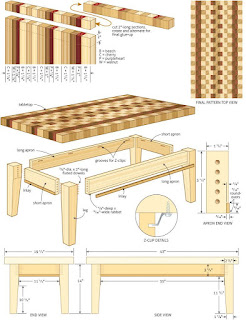Miniature Barbie Furniture Plans for Fun and Creative Builds
Dive into the delightful world of miniature crafting with these detailed plans for building adorable furniture for your Barbie dolls! Forget mass-produced playsets; unleash your creativity and build unique pieces tailored to your Barbie's lifestyle. These plans offer a blend of simplicity and detail, perfect for beginners and experienced crafters alike. Prepare to embark on a rewarding journey of miniature making, resulting in charming and personalized additions to your doll's world.
Designing Your Dream Dollhouse Furnishings
Before you grab your tools, let's brainstorm! Consider Barbie's personality and style. Does she prefer a sleek, modern aesthetic or a cozy, rustic farmhouse feel? Perhaps a whimsical, fairytale setting suits her best. This initial design phase is crucial. Sketch out your furniture ideas, noting dimensions proportionate to your Barbie dolls. Think about the materials you'll use – popsicle sticks, cardboard, craft foam, or even balsa wood offer exciting possibilities. The possibilities are endless, limited only by your imagination!
Choosing the Right Materials
Selecting the right materials significantly impacts the final look and feel of your miniature furniture. Popsicle sticks provide a rustic charm and are readily available. Cardboard offers versatility and is easily cut and shaped. Craft foam allows for intricate details and soft textures. Balsa wood, though slightly more challenging to work with, yields incredibly realistic and detailed pieces. Consider the pros and cons of each material before making your selection. Remember to choose materials that are easy to handle and safe for your crafting project.
Building a Charming Miniature Couch
Let's start with a classic – a miniature couch for Barbie! This project uses popsicle sticks and craft glue for a simple yet effective design. First, glue five popsicle sticks together to create the couch's back. Then, glue three pairs of popsicle sticks to form the couch's legs. Remember to leave space for cushions. Next, glue four popsicle sticks horizontally to form the couch's seat. Finally, add small squares of fabric or foam as cushions for a touch of comfort and color. This simple build provides a great introduction to miniature furniture making.
Step-by-Step Instructions:
- Glue five popsicle sticks together for the back.
- Create legs using three pairs of popsicle sticks.
- Attach the seat using four horizontal popsicle sticks.
- Add fabric or foam cushions for added comfort.
Crafting a Miniature Table
A miniature table complements any dollhouse perfectly. For this project, let's use cardboard. Cut a square or round piece of cardboard for the tabletop. For the legs, cut four thin strips of cardboard and glue them to the underside of the tabletop, ensuring stability. You can decorate the table with paint, glitter, or even tiny stickers to match Barbie's style. This simple design allows for creativity and personalization, making each table unique.
Adding Finishing Touches and Personalization
Once the basic furniture is built, the real fun begins! Personalize your creations with paint, fabric, tiny beads, and other embellishments. Add small details like miniature throw pillows, blankets, or even tiny plants to bring your doll's home to life. Don't be afraid to experiment and try new techniques. The joy of miniature crafting lies in the freedom of creative expression. Remember, your creations reflect your unique style and personality – embrace it!
With a little patience and creativity, you can craft a stunning collection of miniature furniture for your Barbie. So, gather your materials, unleash your imagination, and embark on this rewarding crafting adventure! Happy building!

































